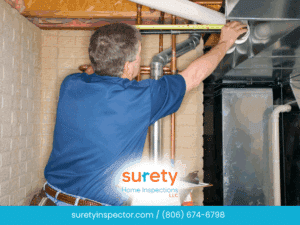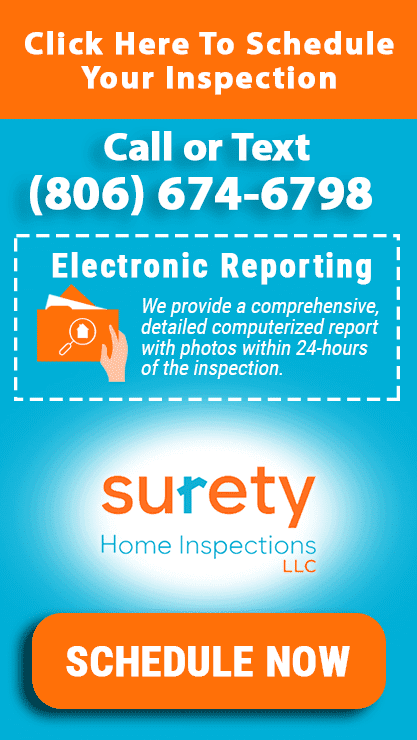 Home Inspections in Bedford, TX, Fort Worth, TX, and Surrounding Cities: What You Need to Know
Home Inspections in Bedford, TX, Fort Worth, TX, and Surrounding Cities: What You Need to Know
When buying a home, one of the most critical steps is scheduling a professional home inspection. This gives buyers peace of mind and a clearer understanding of the property’s current condition. But what happens if something goes undetected during the inspection? While this concern is understandable, it’s essential to understand what a home inspection is—and isn’t. Industry standards, visual limitations, and the terms of the inspection agreement play a vital role in shaping home inspection expectations. In this blog, we’ll cover what home inspections typically include, why certain conditions may not be visible, and how buyers and inspectors can work together to minimize risk and ensure a smooth process.
What Does a Home Inspection Include?
A standard home inspection is a visual, non-invasive assessment of a home’s major systems and components. The inspector evaluates what is visible and accessible at the time of inspection, providing insights into the home’s overall condition. Common areas of focus include:
Roof and attic
Exterior siding, windows, and doors
Foundation, grading, and drainage
Electrical and plumbing systems
HVAC system
Interior walls, ceilings, and floors
🔍 Note: Home inspectors do not open walls, dismantle systems, move furniture, or perform specialized testing (such as for mold, radon, or pests) unless specifically contracted as additional services.
Why Certain Issues May Not Be Identified During an Inspection
Even a highly experienced, licensed home inspector works within the limitations of a visual inspection. Here are a few reasons certain problems may go undetected:
Inaccessible areas: Attics, crawl spaces, or rooms blocked by storage may prevent full access.
Concealed conditions: Issues hidden behind walls, underground, or within sealed systems may not be visible.
Seasonal/weather factors: Certain concerns (like roof leaks or HVAC function) may not be observable due to weather conditions.
Specialty areas: Radon, mold, or sewer lines require separate, specialized inspections.
Inspection scope: The inspection evaluates the home’s condition at a specific point in time—not guaranteeing future performance.
Understanding these limitations sets proper expectations and supports better decision-making.
Home Inspection Agreements and Expectations
1. Inspection Contracts and Disclaimers
Most home inspectors provide detailed agreements that clearly define the scope and limitations of the inspection. These contracts emphasize that the service is visual and non-invasive, helping clarify that certain conditions may not be visible at the time of the visit.
2. Industry Standards and Professional Practices
Inspectors follow recognized home inspection standards of practice and are trained to assess properties with consistency and care. While they aim to be thorough, inspections are not exhaustive and do not uncover every issue—especially those that are hidden or inaccessible.
3. Local Regulations and Time Limits
Each state may have specific regulations about home inspections, including statutes of limitations for raising concerns. Most allow 1–2 years after a problem is discovered to initiate a claim. Buyers should refer to their state laws and inspection agreement for details.
How Buyers Can Protect Themselves
Being an informed and proactive buyer can help reduce risk and increase peace of mind. Consider these steps:
Hire a certified, licensed home inspector with strong reviews.
Carefully read and understand the inspection agreement.
Attend the inspection and ask questions.
Schedule optional inspections for concerns like radon, mold, pests, or sewer lines.
Review the inspection report thoroughly.
Consider purchasing a home warranty for additional protection.
How Inspectors Support the Home Buying Process
Professional home inspectors aim to provide a valuable service that supports buyer confidence. They take steps to protect both their clients and themselves, including:
Providing clear, detailed inspection reports with labeled photos.
Staying current with industry standards, training, and licensing requirements.
Communicating clearly about the inspection process and its limitations.
Documenting inaccessible or unsafe areas.
Maintaining professional insurance, such as Errors and Omissions (E&O) coverage.
Understanding the Role of a Home Inspection
A home inspection is one of the best ways to gain insight into a property’s condition before signing on the dotted line. While it cannot guarantee that a home is free of all defects, it provides a trusted and professional assessment of the home’s visible condition at a specific moment in time. Working with a qualified and reputable inspector and understanding the scope of the inspection can help you make confident and informed decisions.
Frequently Asked Questions
Is a home inspection a guarantee that everything is fine?
No. It’s a visual overview of the home’s condition at the time of the inspection. Some issues may not be visible or accessible.
What should I do if I find a defect after moving in?
Start by reviewing your inspection report and reaching out to your inspector with questions. If necessary, consult a specialist or contractor for a more thorough evaluation.
Can a home warranty help with unexpected repairs?
Yes. A home warranty can provide additional peace of mind by covering certain systems and components not identified during the inspection.
Don’t leave one of your biggest investments to chance. Whether you’re buying, selling, or simply want to know more about your property’s condition, we are here to help.
📞 Call now at 833-396-8377 or 🗓️ Schedule your Fort Worth home inspection online to get started with a comprehensive, professional inspection.

 Home Inspections in Bedford, TX, Fort Worth, TX, and Surrounding Cities: What You Need to Know
Home Inspections in Bedford, TX, Fort Worth, TX, and Surrounding Cities: What You Need to Know
